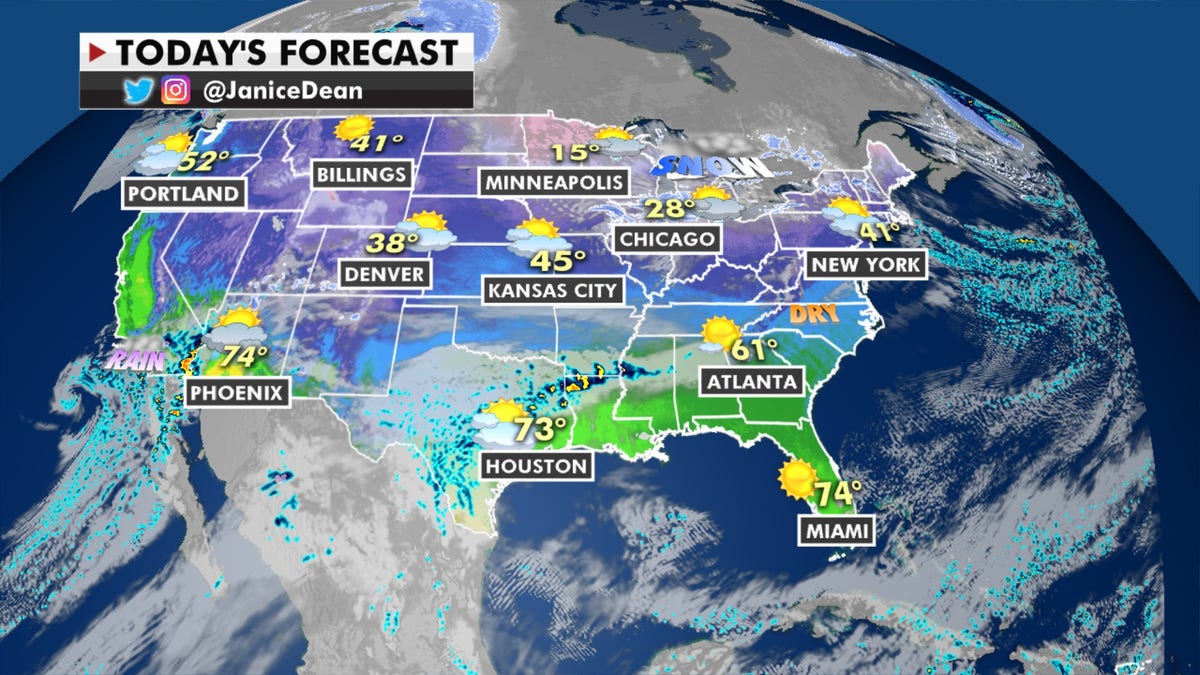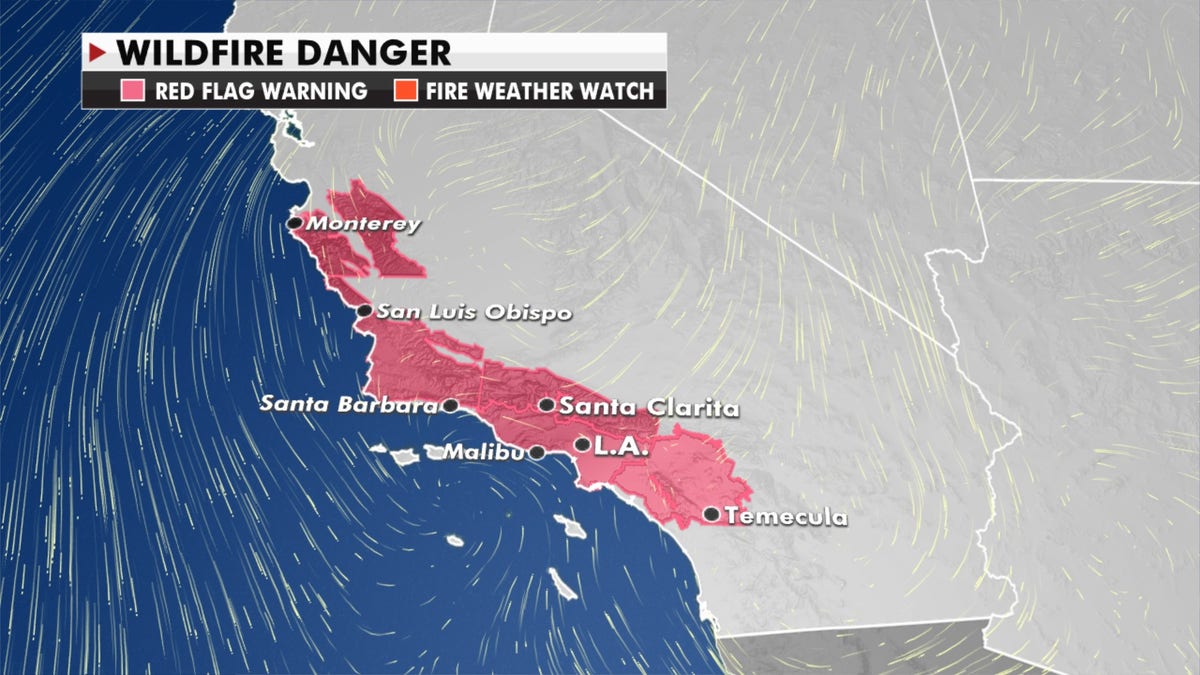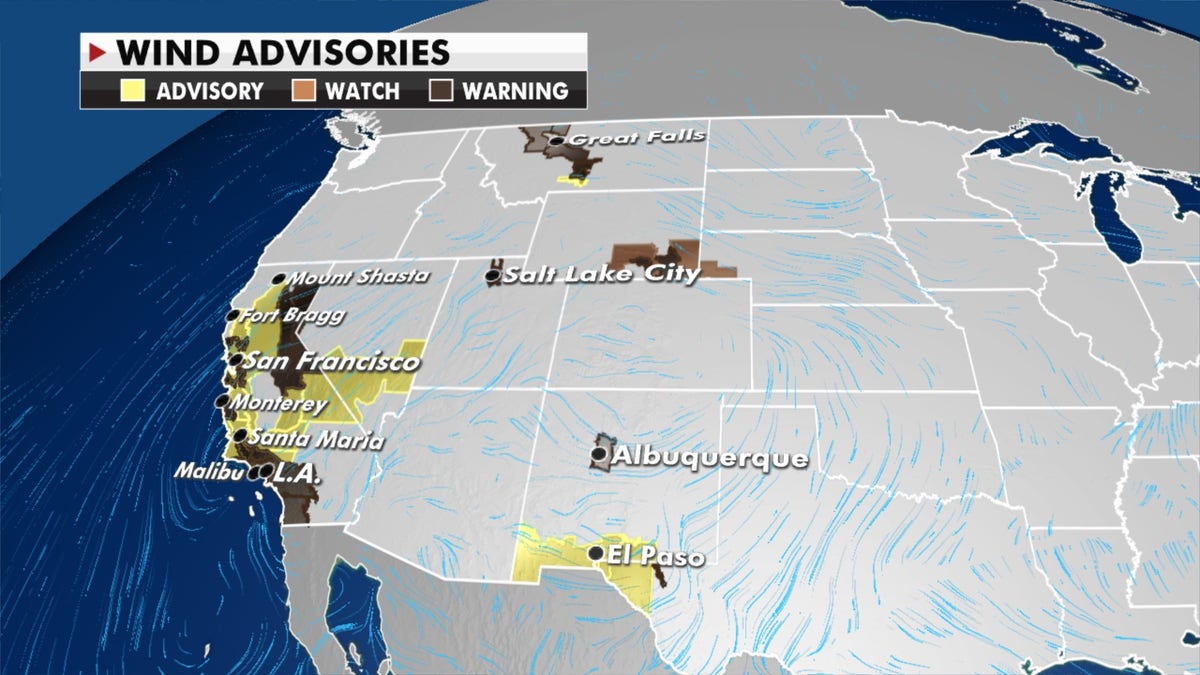Final preparations underway for Wednesday's historic inauguration
FOX News correspondent Kevin Corke joins 'Special Report' with the latest from Washington
Weather should be dry for Wednesday’s inauguration of President-elect Joe Biden in Washington, D.C. It will be partly sunny and with temperatures in the low 40s, which is average for this time of year in the nation's capital.
"Seasonable temps are expected with cool, brisk winds for Inauguration Day," tweeted the National Weather Service Baltimore-Washington on Monday.
A system off the Southern California coast is both a blessing and a curse to the region — we are expecting some moisture to move in but, ahead of the rain (and mountain snow), very strong winds will threaten the area enhancing the risk for fire danger, power outages, tree and property damage.
Widespread high wind warnings are in effect, where gusts could reach 70-80 mph through the mountain passes.
DEVASTATING WILDFIRE 'ANATOMY' EXPLAINED

Weather graphic for Jan. 19, 2021. (Fox News)
"High winds could bring down trees and power lines in portions of California, Utah, Montana, Texas, Nevada, New Mexico and Wyoming on Tuesday," tweeted the National Weather Service.
Heavy snow is also forecast for portions of the Southern Rockies with totals of more than a foot in the mountains of Colorado into New Mexico.
Lake effect snow totals continue to pile up for parts of Northwestern New York and Michigan.
LAKE EFFECT SNOW: HERE'S HOW IT IMPACTS THE GREAT LAKES

Forecasters have warned of wildfire danger in California. (Fox News)
Lake effect snow is a common occurrence in the Great Lakes region during winter and late fall, according to the National Weather Service.
CLICK HERE TO GET THE FOX NEWS APP

Wind advisories have been issued. (Fox News)
"Lake Effect snow occurs when cold air, often originating from Canada, moves across the open waters of the Great Lakes," NWS explains on its website. "As the cold air passes over the unfrozen and relatively warm waters of the Great Lakes, warmth and moisture are transferred into the lowest portion of the atmosphere." The air rises and clouds form, growing into a narrow band that produces snow, it adds.



